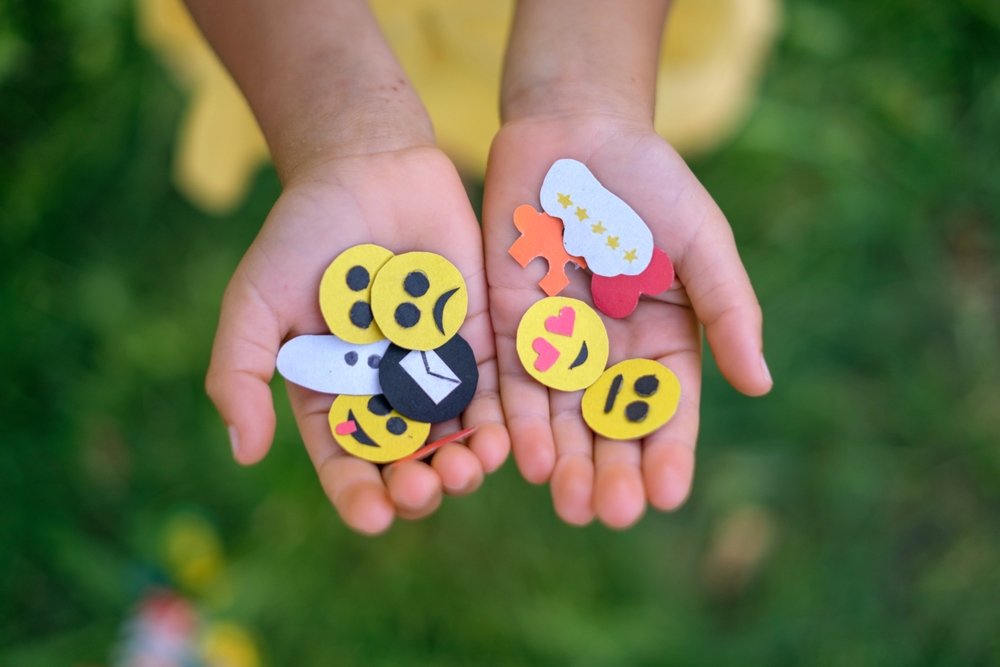

Mulți părinți observă reacții mai puternice din partea copilului în jurul acestei vârste. Creșterea creierului și schimbarea cerințelor sociale fac adesea ca sentimentele să fie mai puternice și mai greu de gestionat.
În această etapă, copiii pot plânge, țipa, refuza sarcini sau se pot comporta agresiv. Aceste izbucniri se pot întâmpla deoarece abilitățile de reglare sunt încă în formare. În primul pas este identificarea a ceea ce este tipic față de ceea ce are nevoie de sprijin suplimentar.
Validarea sentimentelor și stabilirea unor limite clare ajută copilul să învețe să gestioneze emoțiile. Instrumente simple precum respirația profundă, împământarea, sesiunile scurte de jurnal și afirmațiile blânde calmează valurile. Rutinele privind somnul și alimentația afectează, de asemenea, comportamentul și sănătatea.
Unii copii manifestă reacții mai mari din cauza unor afecțiuni precum ADHD, anxietate, TOC sau provocări de opoziție; monitorizarea tiparelor este importantă. Cu timp, răbdare și îndrumare consecventă, un copil dobândește abilități pentru a gestiona mai eficient sentimentele mari.
Să înțeleg de ce copilul meu de 8 ani este atât de emotiv
În acest stadiu, mulți copii manifestă sentimente mai mari, bruște, care îi iau prin surprindere pe îngrijitori. Tantrumurile pot include plânsul, țipătul, lovirea cu piciorul, aruncarea de obiecte, lovirea, mușcătura, rigidizarea, stările de reținere a respirației sau lovirea capului. Aceste izbucniri emoționale rămân frecvente în timp ce autocontrolul și abilitățile executive se maturizează.
Cum arată sentimentele mari
- Lacrimi, țipete puternice, călcat în picioare sau prăbușire într-o stare de moleșeală.
- Acte mai intense, cum ar fi aruncarea de obiecte sau agresiuni scurte.
- Se retrage brusc, își ține respirația sau lovește când este supărat.
Dezvoltare normală versus semnale de alarmă
Mulți copii se calmează cu ajutorul rutinelor stabile, al limitelor clare și al limbajului de validare. Îngrijitorii pot spune: "Înțeleg că te simți supărat", pentru a valida emoțiile copilului, menținând în același timp reguli ferme de siguranță. Acest lucru ajută un copil să învețe să se controleze și să se simtă văzut.
Căutați ajutor în cazul în care accesele de furie sunt frecvente, se agravează în alte medii sau afectează progresul școlar și prieteniile. Agresivitatea persistentă, riscul de autovătămare sau afectarea zilnică justifică o evaluare profesională.
| Semn | Tipice | Când să consultați |
|---|---|---|
| Lacrimi și țipete | Ocazional, se rezolvă cu confort | Episoade zilnice sau prelungite |
| Aruncarea sau lovirea | Rare, de scurtă durată, cu limite | Comportament frecvent sau periculos |
| Impact școlar sau social | Minor, sprijinul profesorilor ajută | Scăderea notelor sau pierderea prieteniilor |

Știința și etapele din spatele sentimentelor accentuate
Modificările fizice și neuronale se combină adesea pentru a face ca sentimentele să se simtă mai mari la sfârșitul copilăriei. În această perioadă, schimbările hormonale și creșterea creierului pot schimba modul în care un copil reacționează la stresul cotidian.
Adrenarhe și modificări hormonale
Adrenarche este o schimbare hormonală înainte de pubertate care poate crește reactivitatea. Unii copii prezintă mai multe lacrimi, frustrare sau furie în timpul acestei faze. Băieții pot prezenta uneori o agresivitate mai vizibilă.
Dezvoltarea creierului și autocontrolul
Lobii frontali care gestionează controlul impulsurilor și gândirea flexibilă rămân în construcție. Acest model de creștere face dificilă reglarea constantă atunci când apar sentimente puternice.
Copii extrem de sensibili
Aproximativ 15-20% din populație are o sensibilitate ridicată. Acești copii manifestă adesea o empatie profundă, o imaginație vie și o creativitate puternică, dar se confruntă cu o suprastimulare cauzată de zgomot, lumină sau critici dure. Clasele aglomerate sau jocurile în grup pot crește izbucnirile și stresul în mediul școlar.
Factori de sănătate mintală și traumă
- Preocupările comune includ ADHD, anxietate, TOD și TOC; fiecare poate crește frecvența sau intensitatea izbucnirilor.
- Expunerea la traume se poate manifesta prin tulburări de somn, hipervigilență sau comportament agresiv acasă și la școală.
| Șofer | Semn tipic | Luare în considerare |
|---|---|---|
| Adrenarche | Mai multe lacrimi sau furie | Normal, dar monitorizați schimbările |
| Sensibilitate | Suprastimulare rapidă | Ajustați încărcătura senzorială |
| Tulburări | Probleme frecvente de comportament | Căutați evaluare și sprijin |
Notă: Observarea modelelor și a duratei ajută la diferențierea schimbărilor tipice de problemele persistente. Identificarea motorului principal orientează sprijinul direcționat, fără a eticheta copilul.
Identificarea declanșatorilor și a tiparelor care determină izbucnirile emoționale
Observarea micilor modele ajută îngrijitorii să identifice momentele care cresc stresul și duc la izbucniri. O privire concentrată asupra rutinei zilnice dezvăluie adesea factorii declanșatori repetați și nevoile nesatisfăcute. Acest lucru ajută la planificarea unor schimbări simple care previn escaladarea.
Factori declanșatori comuni: tranziții, dezamăgire, lipsă de control
Tranziții-trecerea de la joacă la pregătire sau de la pauză la ore - generează adesea frustrare. Cererile refuzate sau sentimentele de control pot accentua furia și pot produce izbucniri rapide.
Nevoi fizice nesatisfăcute: somn, foame, pauze la toaletă
Verificați mai întâi nevoile de bază. Foamea, oboseala sau vezica urinară plină scad toleranța unui copil și fac mai probabile reacțiile puternice.
Suprasolicitarea senzorială și factorii de stres din mediu
Cafenelele zgomotoase, magazinele luminoase sau holurile aglomerate pot copleși copiii sensibili. Aceste lovituri senzoriale preced adesea căderile și retragerea bruscă.
Probleme cu prietenii la școală
Conflictele, tachinările sau sentimentul de excludere pot cântări greu asupra emoțiilor unui copil. Luptele pentru prietenie pot provoca iritabilitate, pot distrage atenția de la învățare și pot crește șansele de reacții emoționale bruște.
Stresul părinților și schimbările familiale pe care le poate simți un copil
Copiii se prind de tensiunea din casă. Îngrijorarea vizibilă a unui părinte sau schimbările din familie pot spori sentimentele unui copil, chiar și atunci când adulții nu discută direct despre acestea.
- Urmăriți modelele: notați ora, locul, evenimentele anterioare, persoanele prezente și orice factori senzoriali.
- Oferiți previzualizări și opțiuni limitate pentru a spori controlul și a reduce luptele pentru putere.
- Împărtășiți notițele cu personalul școlii pentru a identifica modelele din clasă sau de pe terenul de joacă.
| Declanșator | Semn | Acțiune rapidă |
|---|---|---|
| Tranziția | Protest sau refuz | Dați un avertisment de 2 minute |
| Nevoi nesatisfăcute | Iritabilitate, bâlbâială | Oferă o gustare sau baie |
| Suprasarcină senzorială | Acoperirea urechilor, topirea | Mutați-vă într-un loc liniștit |
Notă: Urmărirea nu înseamnă culpabilizare. Ea dezvăluie factorii de stres previzibili și îi ajută pe adulți să protejeze timpul de liniște al copilului și să dezvolte abilități.
Cum să ajutați un copil să-și regleze emoțiile pe moment
Pașii simpli luați pe moment îl ajută pe copil să-și recapete controlul și siguranța. Îngrijitorii care acționează calm oferă o cale clară de la supărare la reparație.
Validarea sentimentelor, stabilirea limitelor de comportament
Validarea emoțiilor copilului numind sentimentul și spunând că este în regulă să te simți supărat. Asociați validarea cu o limită clară: comportamentul care îi rănește pe ceilalți nu mai poate continua.
Tehnici rapide de calmare
Ghidați un copil să numere o respirație profundă sau trei respirații lente. Încercați împământarea: observați cinci lucruri pe care le pot vedea sau atinge. Relaxarea musculară progresivă ajută la eliberarea încordării.
Dezvoltarea alfabetizării emoționale și a gândurilor de coping
Ajutați-i pe copii să numească sentimentele și să folosească fraze scurte de coping, cum ar fi "Pot face față acestui lucru pas cu pas". Practicați afirmațiile și jurnalul scurt atunci când sunt calmi pentru a consolida abilitățile de gestionare a emoțiilor mai târziu.
Modelul calm și co-reglementat
Adulții își încetinesc respirația, reduc tonul și folosesc cuvinte simple. Această co-reglare îl antrenează pe copil să oglindească un răspuns mai calm în timpul acceselor de furie.
Îngrijire ulterioară: reparare și consolidare
Așteptați până când copilul este mai calm pentru a reflecta. Oferiți căldură, reparați orice rău și lăudați pașii mici, cum ar fi o respirație sau solicitarea de spațiu.
Sfat suplimentar pentru părinți
Luați în considerare utilizarea unei aplicații de control parental, cum ar fi Parentaler.com să monitorizeze activitatea online, să stabilească limite sănătoase ale timpului petrecut în fața ecranului și să reducă factorii declanșatori digitali care pot contribui la stresul emoțional.
| Moment | Acțiune | De ce ajută | Sfat |
|---|---|---|---|
| La vârf | Validare, stabilire limită | Separă sentimentele de comportament | Utilizați "Văd că sunteți supărat" |
| În timpul calmului | Respirație, împământare | Reduce rapid excitarea | Numărați până la patru pe inspirație |
| După | Reflectați și consolidați | Construiește capacitatea de a face față în viitor | Sărbătoriți victoriile mici |
Crearea unor rutine zilnice care să sprijine sănătatea mintală
Obiceiurile constante de acasă și de la școală le oferă copiilor instrumentele necesare pentru a gestiona emoțiile. Rutinele reduc incertitudinea, diminuează stresul și facilitează utilizarea abilităților de adaptare atunci când un copil are cea mai mare nevoie de ele.
Igiena somnului pentru copiii de vârstă școlară
Vizați 9-11 ore noaptea, cu ore fixe de culcare și de trezire. O scurtă relaxare, o meditație ghidată sau o aromă de lavandă pot stimula odihna și pot îmbunătăți sănătatea somnului pentru rutinele școlare.
Tranziții previzibile și cronometre pentru a se pregăti
Utilizați cronometre vizuale, liste de verificare și avertismente de două minute pentru a ușura diminețile și serile. Indicațiile clare reduc certurile de ultim moment și ajută copilul să îndeplinească sarcinile cu mai puțină presiune.
Zone de confort, puncte forte și expunere blândă
Planificați zilele în funcție de punctele forte și de spațiile sigure, cum ar fi un colț calm dotat cu instrumente senzoriale și un meniu de adaptare. Expunerea treptată și blândă creează încredere fără a copleși copiii sensibili.
Când să solicitați sprijin profesional și cum să vorbiți cu școala
Solicitați asistență medicală dacă dificultățile durează luni de zile, se agravează în diferite contexte sau indică anxietate sau posibile tulburări precum ADHD, ODD sau TOC. Pediatrii, terapeuții pentru copii și programele comunitare oferă screening și intervenții.
Împărtășiți modele și tehnici de succes cu profesorii. O întâlnire scurtă poate aranja măsuri de sprijin, cum ar fi avertismente de tranziție, locuri preferențiale sau pauze de respirație coordonate înainte de efectuarea temelor.
- Practicați o "pauză de respirație" zilnică după școală pentru a reseta și a utiliza tehnicile de respirație profundă învățate anterior.
- Includeți copilul în planificarea rutinelor pentru a încuraja implicarea și abilitățile de viață care se transferă în afara casei.
| Concentrare | Acțiune zilnică | Beneficii |
|---|---|---|
| Somn | Program fix + lichidare | Stare de spirit și atenție mai bune la școală |
| Tranziții | Cronometru vizual, listă de verificare | Mai puține conflicte în timpul pregătirii |
| Sprijin | Colț liniștit, meniu de rezolvare | Reglarea independentă a emoțiilor |

Concluzie
Un plan constant de validare, limite și practică ajută familiile să meargă mai departe. The primul pas este înțelegerea modului în care dezvoltarea, mediul și temperamentul se combină pentru a produce izbucniri la un copil.
Rutinele zilnice - somn regulat, tranziții clare și pauze scurte de reglare - dezvoltă abilități durabile. Reacția calmă a unui adult, combinată cu o practică constantă, ajută mult și scurtează episoadele intense în timp.
Părinții ar trebui să se coordoneze cu personalul școlar și să solicite asistență pediatrică atunci când semnele de anxietate sau alte tulburări afectează viața de zi cu zi. Încurajați implicarea copilului în soluții pentru a stimula asumarea și a transfera învățarea dincolo de casă.
Progresele se adună: fiecare respirație, pauză și mic succes consolidează trusa de instrumente a familiei. Cu răbdare și consecvență, copiii dobândesc independență și reziliență într-un mod semnificativ.




